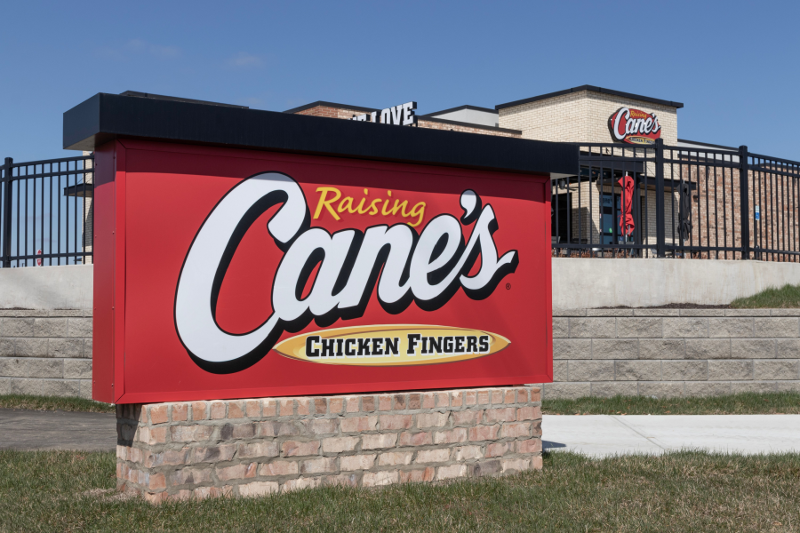
Restaurant chains picked up the pace of development in 2022 despite a host of inflation and labor challenges, which along with rising menu prices helped drive sales 8.2% higher last year, according to the 2023 Technomic Top 500 Chain Restaurant Report.
Collective sales for the 500 largest chain restaurants were $392.8 billion according to the report, which ranks chains based on total U.S. system sales generated in 2022. The rate of growth was nearly twice the 4.4% average rate in the eight years before the pandemic. Yet total sales growth barely kept pace with menu price inflation over the course of the year.
“On an aggregate basis, they were flat,” said Kevin Schimpf, director of industry research and insights for Technomic, a sister company of Restaurant Business. “Lots of operators were taking price over the rate of inflation.”
The number of locations in the Top 500, meanwhile, grew 1.7% to 230,005, a record number of restaurants on the ranking.
Top 500 chains opened a net of 3,770 locations, officially recovering unit count lost when the pandemic hammered sales and led to widespread closures. The level of development was notable, particularly given permitting delays, construction cost increases and a shortage of labor that made it difficult to staff restaurants.
Indeed, the rate of unit growth was slower than it was in the years leading up to the pandemic. But 25 chains opened 50 or more locations last year, with Starbucks opening more than 400, or more than one out of 10 locations the Top 500 opened. Crumbl Cookies, the fast-growing cookie franchise, added more than 300.
Inflation “certainly doesn’t seem to be slowing anyone down,” Schimpf said. “Top 500 locations are well above where they were in 2019. They’ve recovered and then some, from a location perspective.”
The chain restaurant universe has had a considerably stronger recovery than have independents, which struggled more during the pandemic and its inflation-heavy aftermath.
As a result, sales generated by the 500 largest restaurant chains now account for 59% of total restaurant industry sales. That’s up from 53% in 2019.
“The Top 500 continues to get bigger,” Schimpf said. “Small chains and independents are shrinking. That universe is getting smaller. And the chain universe is getting bigger.”
And the Top 500 itself is top heavy. Forty-three percent of the sales generated by the Top 500 came from the 10 largest chains, which together had $170 billion in sales.
To put this into perspective: One-quarter of all U.S. restaurant sales came from the following chains: McDonald’s, Starbucks, Chick-fil-A, Taco Bell, Wendy’s, Dunkin’, Burger King, Subway, Domino’s and Chipotle Mexican Grill.
Those chains, incidentally, remained in the same order they were in the year before. McDonald’s, as it has every year for the existence of this ranking, remains the largest restaurant chain in the U.S., with sales nearly $50 billion. The company managed to avoid net closures last year for the first time in nearly a decade.
Chicken chains continued to thrive last year, largely behind three chains: Chick-fil-A, Raising Cane’s and Wingstop.
Chick-fil-A’s system sales increased 13% to $18.8 billion and Cane’s increased 31% to $3.1 billion, both chains enjoying strong unit volumes--$6.8 million for Chick-fil-A; $5.4 million for the fast-casual Cane’s. Wingstop, meanwhile, added a chicken sandwich, enabling that brand to maintain its strong momentum from the pandemic. Its system sales increased 17% to $2.5 billion.
There are a few upstarts, too. Dave’s Hot Chicken is one of the fastest growing chains in the U.S., with sales up 156%. Jollibee, the Philippine chicken concept, grew by 24%. But many other chicken concepts such as Popeyes, KFC, Church’s Texas Chicken and others, struggled to generate much growth. Overall, fast-food chicken chains’ sales grew 11% last year.
“There are a few chains that are treading water,” Schimpf said. “Chick-fil-A and Raising Cane’s are lifting up the whole category.”
Not keeping its momentum, on the other hand, was the pizza sector. The four largest pizza chains in the U.S., Domino’s, Pizza Hut, Little Caesars and Papa Johns, each generated less than 2.3% system sales growth.
Pizza sales on the Top 500 grew by just 2% after surging during the pandemic. Yet customers tired of pizza last year and inflation led many consumers to opt for frozen pizza. “It’s normalization,” Schimpf said. “They did well during the pandemic and in 2021. Now in 2022 they’re coming back down to earth.”
A few other chains that thrived during the pandemic also came back down to earth. That includes Sonic Drive-Ins, which surged during quarantine when customers flocked to their drive-ins and ate from their cars. Yet last year, as business normalized, their sales fell 5.8%.
Limited-service chains remained the dominant source of sales from Top 500 restaurants, with 78.6% of the sales generated, compared with 75.9% in 2019, before the pandemic. But the full-service sector continued to improve. Total sales for full-service Top 500 restaurants were $84 billion, higher than in 2019.
Two of the three largest casual dining chains in the U.S., Olive Garden (No. 1) and Texas Roadhouse (No. 3) continued to perform more strongly than most full-service restaurants. Olive Garden sales rose 12% last year to $4.7 billion.
Texas Roadhouse sales grew 13% to $4.2 billion. “Texas Roadhouse could become the largest full-service chain soon over Applebee’s and Olive Garden,” Schimpf said. “They could pass those chains in the next few years.”
Members help make our journalism possible. Become a Restaurant Business member today and unlock exclusive benefits, including unlimited access to all of our content. Sign up here.
